An interesting Comic Book Thread!! (Hopefully)9768
 Moderator Moderator
|
Jesse_O private msg quote post Address this user | |
| Based upon a comment in another thread, I decided to start an interesting Comic Book thread!!! Let's put interesting notes here on the history of comic books and their creators. Let's try to keep this factual and not opinionated. Basically, if it is related to comic books and interesting, feel free to share it here!! I'll start with a "On this day in comic book history" type of post. It has just turned August 8th, 2019 here. So, on August 8th, 1961, a very pivotal comic book hit the newsstands!!! It introduced us to new types of superheroes and started what is known as the "Marvel Age"!!! FANTASTIC FOUR #1 From wiki - "The first issue of The Fantastic Four proved a success, igniting a new direction for superhero comics and soon influencing many other superhero comics. Readers grew fond of Ben's grumpiness, Johnny's tendency to annoy others and Reed and Sue's spats. Stan Lee was surprised at the reaction to the first issue, leading him to stay in the comics field despite previous plans to leave. Comics historian Stephen Krensky said that "Lee's natural dialogue and flawed characters appealed to 1960s kids looking to 'get real'"." 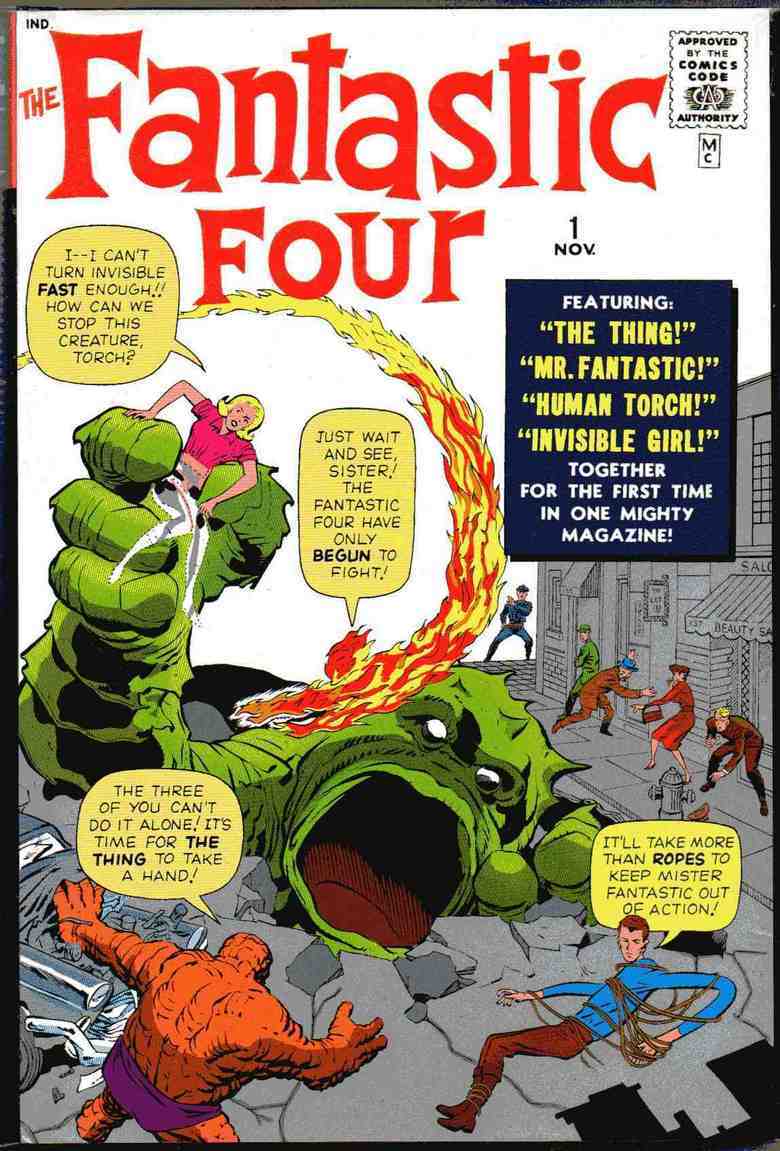 |
||
| Post 1 • IP flag post | ||
 Moderator Moderator
|
Jesse_O private msg quote post Address this user | |
| Fun trivia on Sergio Aragones. Quote: Originally Posted by wiki 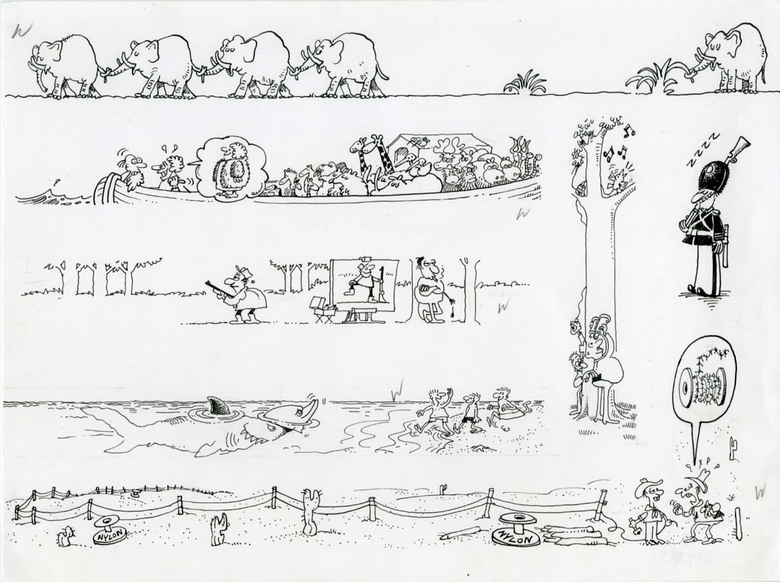 |
||
| Post 2 • IP flag post | ||
 Masculinity takes a holiday. Masculinity takes a holiday.
|
EbayMafia private msg quote post Address this user | |
| Cool! Nice to know I was born exactly 9 years after Reed Richards and crew took that fateful trip into space...August 8, 1970. Here's a favorite of mine: Alan Moore grew up with the British Marvelman comics which he of course turned into Miracleman. He said that he just always thought about what happened to Marvelman and contemplated the thought of a depressed middle-aged man with amnesia walking around London for 25 years with vague memories of strange comic-type heroes and villans. |
||
| Post 3 • IP flag post | ||
 Moderator Moderator
|
Jesse_O private msg quote post Address this user | |
| Happy Birthday!!! That is a cool insight to have on Alan Moore!! I never knew that. |
||
| Post 4 • IP flag post | ||
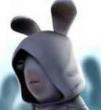 COLLECTOR COLLECTOR
|
dielinfinite private msg quote post Address this user | |
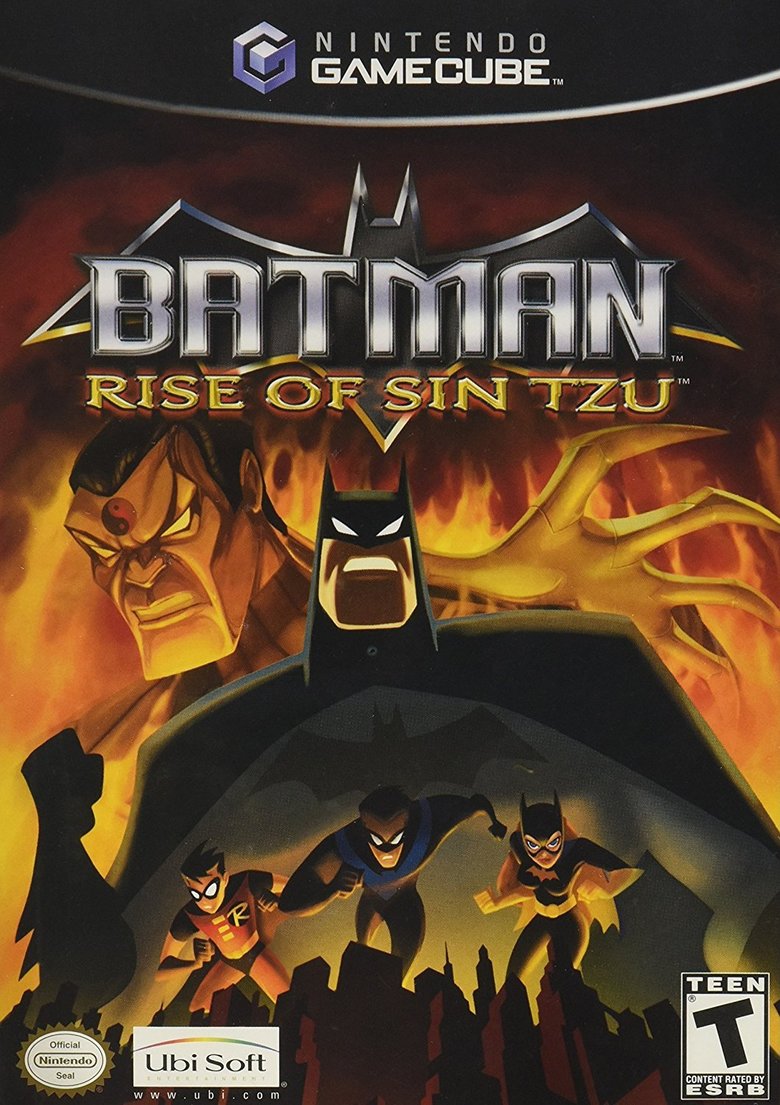 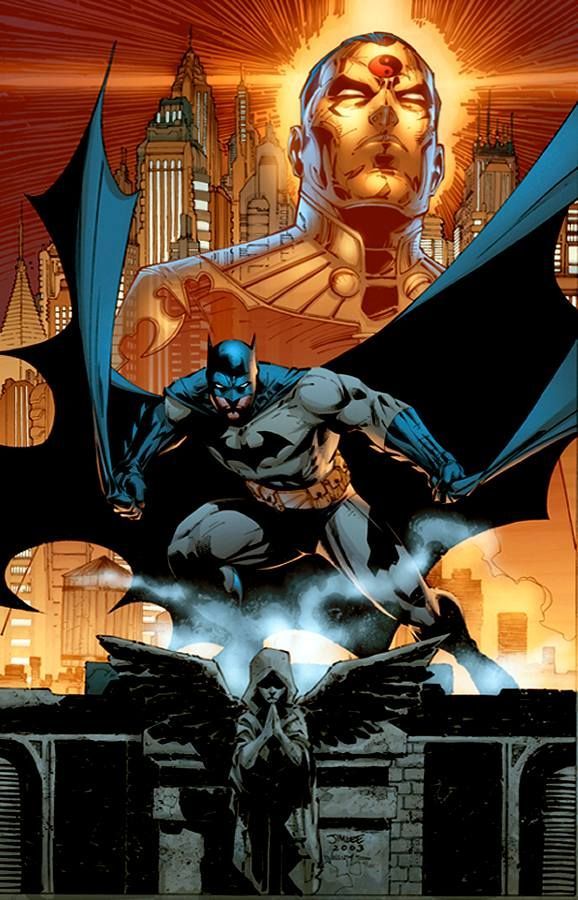 Back in 2003, Ubisoft released the video game Batman: Rise of Sin Tzu, a sequel to their previous game, the amazing Batman: Vengeance, both set in the Batman: The Animated series continuity. One of the major marketing points for the game was that comics superstar, Jim Lee, had developed a new character for the game, according to them the first new Batman character created for a video game, the master strategist, Sin Tzu. Part of the inspiration for this had come from Harley Quinn who was created for Batman: The Animated series but whose popularity eventually lead her to find her way into the mainstream DC comics. Unfortunately, the game didn’t fare well critically, especially compared to it’s predecessor. While Batman: Vengeance was a third-person action/adventure game with a wide variety of gameplay scenarios attached to a great story, Rise of Sin Tzu was a monotonous beat ‘em up. The story wasn’t bad and now, in retrospect, some inspiration from the Knightfall storyline is apparent as Sin Tzu sought to defeat Batman for the challenge of taking down a seemingly unbeatable challenge and seeks to do so, in part, by orchestrating a prison break, forcing Batman to fight through many of his rogues gallery. While there was a short online comic featuring the character that was released weekly as a tie-in to the game, the game’s critical failure didn’t help push the character’s popularity and so he never made the transition to comics the way Harley Quinn did. However, in 2016, 13 years after his video game debut, Sin Tzu did briefly appear in the main DC universe in Suicide Squad Most Wanted: El Diablo and Killer Croc #3, in a story aptly titled, Knightfall 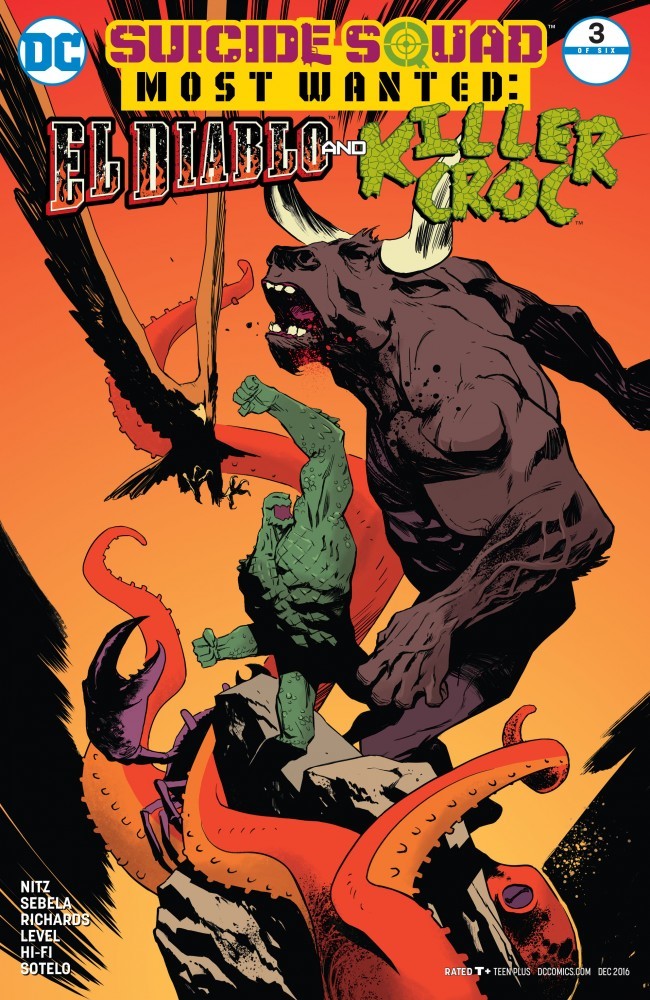 |
||
| Post 5 • IP flag post | ||
 Moderator Moderator
|
Jesse_O private msg quote post Address this user | |
| One of my favorite comic book artists was a very interesting person. Tommy Castillo was an avid BMX racer in his younger years. He even had a small role in the movie "Rad". But in one race, his bike was sabotaged and he ended up breaking a leg. This put him in a wheelchair. It turned out that the only classroom that could accommodate his wheelchair was the art class. Once there, the art teacher challenged him to draw. Tommy had a natural talent and it showed. He went on to become a professional comic book artist. He once studied under Frank Frazetta. He enjoyed inserting Kermit the frog into many of his pieces. Tommy and his second wife, Samantha, both had small roles in a film with Kane Hodder (Jason from Friday the 13th) called "Smothered". Many more interesting things happened in Tommy's life and he was always willing to share them. | ||
| Post 6 • IP flag post | ||
 Moderator Moderator
|
Jesse_O private msg quote post Address this user | |
| On March 12th, 1951, two iconic cartoon characters debuted. One came out in the UK, the other in the USA, but they shared the same name - Dennis the Menace!!! In the UK, Davey Law was the driving force behind the creation of that Dennis. There, Dennis appeared in the March 17th, 1951 edition of "Beano". That edition hit the newsstands on the 12th. In the USA, Hank Ketcham's Dennis the Menace appeared in 16 newspapers across the country on March 12th, 1951. Neither artist was aware of the other. When it was discovered what happened, all parties agreed to not pursue any type of legal action and just to keep going. Both characters are still being published today.  |
||
| Post 7 • IP flag post | ||
 Collector Collector
|
Paulbg2000 private msg quote post Address this user | |
Quote:Originally Posted by Jesse_O Dennis the Menace UK has always been the better of the two....mainly because he's dressed like a Football Hooligan (he just seems like more of a menace) and has Gnasher. I didn't know the American Dennis until I moved to Canada. |
||
| Post 8 • IP flag post | ||
 Moderator Moderator
|
Jesse_O private msg quote post Address this user | |
| @Paulbg2000 LOL!!!! I don't know that one can really be better than the other. They are definitely two different characters! I do think that the UK is more of a menace though. The US version is more mischievous. |
||
| Post 9 • IP flag post | ||
 Leftover Sundae Gnus Leftover Sundae Gnus
|
CatmanAmerica private msg quote post Address this user | |
Quote:Originally Posted by Jesse_O Although this take on the “Marvel Age” may initially come across as opinionated, I hope folks will bear with my more nuanced view of Marvel Comics history. While I don’t disagree at all that Fantastic Four was a seminal, groundbreaking comic that led to a reassessment of the costumed hero in popular culture (not to mention the survival of Martin Goodman’s failing comics empire), the more apt term for this era probably should be the “Stan Lee Age” of comics. Stan Lee was by no means the only driving force at Marvel, but it was through his insight and progressive vision that Marvel moved from treading water near bankruptcy to a leader in the comic’s industry. He saw opportunities in continuing story arcs with flawed superheroes and made the creative decisions necessary to right the ship. IMO, he’s due more credit for this era. The facts are these: Marvel’s publisher Martin Goodman toyed with using Marvel as a trademark long before a teen-aged Stan Lee was even involved with comics. First with Marvel science fiction pulps then with Goodman’s earliest comic book in Oct. 1939 the title Marvel Comics was chosen over other possibilities and then tweaked, adding the word “Mystery” with the second issue. Within two years Goodman was publishing spin-offs of successful superhero Human Torch (the original android character) from Marvel Mystery using the “Marvel Special Products” trademark. For awhile Goodman apparently vacillated between three trademarks for his comic lines, that of Timely, Atlas and Marvel. While Stan Lee’s involvement would start in 1941 and grow throughout the 1940’s, his input into the area of trademarking seems negligible at best. By 1947 the publisher tried out the corner emblem featuring a main character in the comic and the words “Marvel” and “Magazine” or “Publication”. Even though this only lasted a brief period of time, it was the forerunner of the now familiar corner box with characters over the phrase “Marvel Comics Group” in the 1960’s. When the hero lines folded in 1949, the Marvel title was kept, the word “Tales” replaced the long running “...Mystery Comics” and the book’s themes moved from featured heroes to horror. During this period and perhaps into the early 50’s there was a Marvel Comics wreath emblem before the Atlas globe became prominent in the PCH era. So, as I see it, the Marvel Age ...complete with some superheroes who were transferred or reinvented for the evolving 1960’s audience... started much earlier, with some degree of attribution due Marvel’s original publisher Martin Goodman. While at first blush this might appear to diminish Stan Lee’s role it actually contributes to it, as Stan Lee was in a position of power and influence at Marvel in the early 1960’s. There should be no doubt that Stan the Man was directly involved in Marvel Comics ascendency to greatness. It was Stan Lee’s decision to reestablish superhero lines, develop continued story arcs and court reader opinions in editorials that moved Marvel forward, raising the esteem of the publisher. IOW, while Marvel was the transitory trademark, Stan Lee was the driving force behind it. And that, my friends, is why I think it would be reasonable to consider this the “Stan Lee Age” ...at least in respect to how Marvel Comics changed the landscape. While I’m not opposed to the “Marvel Age” defining Marvel's rise in prominence, it dates back to the GA. My more nuanced preference for singling out Stan Lee's influence is out of respect for his vision and enduring contributions that changed the whole comic scene in the 1960’s. . |
||
| Post 10 • IP flag post | ||
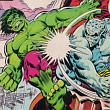 Collector Collector
|
X51 private msg quote post Address this user | |
Based on that, I'll whip out my Li'l Willie with the Marvel Comic emblem on it. All the comics I've seen with this mark are from 1949.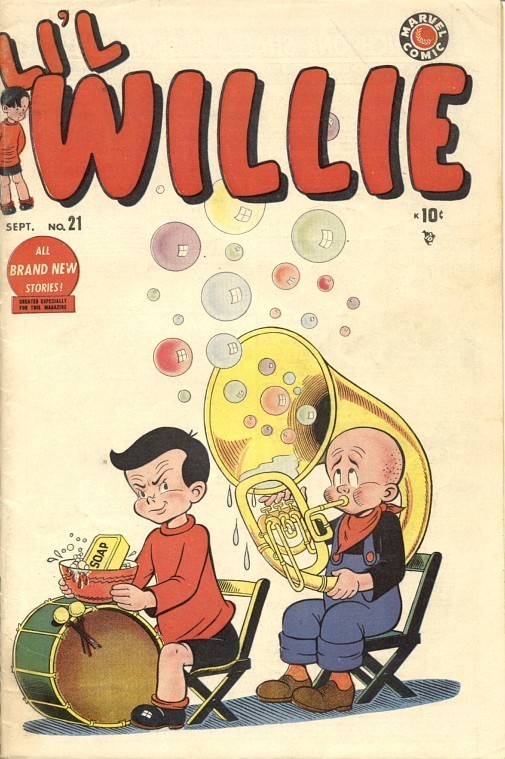 |
||
| Post 11 • IP flag post | ||
 Leftover Sundae Gnus Leftover Sundae Gnus
|
CatmanAmerica private msg quote post Address this user | |
Quote:Originally Posted by X51 You're right, the Marvel wreath emblem started in '49 and here's a couple'a Cap's from that year bearing it... 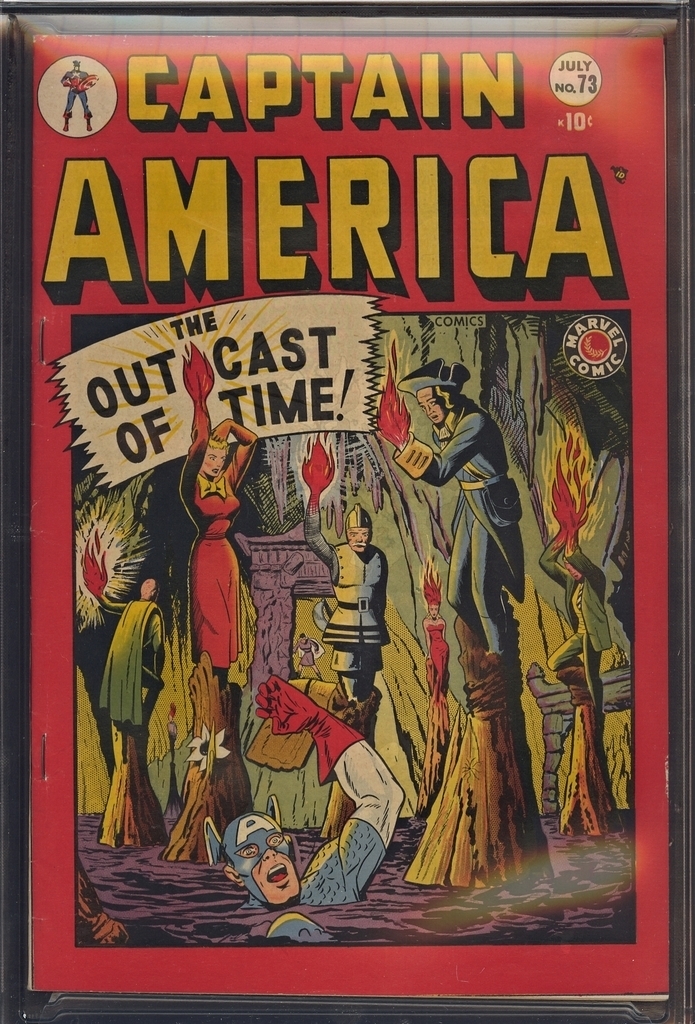  The emblem started with the Mar. issue #71, so I'm assuming it's on #72 (an issue I've yet to acquire), but it's not on #70, the Jan. '49 issue. I'm not sure when the emblem was discontinued, but several early Marvel Tales from 1950 do have it. Alas, I don't currently have Marvel Tales images to post, but Googled images of those early transition PCH books are very cool. . |
||
| Post 12 • IP flag post | ||
 Moderator Moderator
|
Jesse_O private msg quote post Address this user | |
| In the 1960's, DC and Marvel got together and trademarked the term "Superhero". They both jointly own the use of that word. They have enforced it as recently as 2006, when both companies sent "cease and desist" letters to an indie publisher who was using the term in a book title. It's been theorized that Marvel published their "Generic Comic Book" in 1984 to trademark the terms "super-hero" and "super-villain". While the trademark symbol is used in the book for those terms, I could find no instances of it being enforced. The book could have been just a big inside joke. 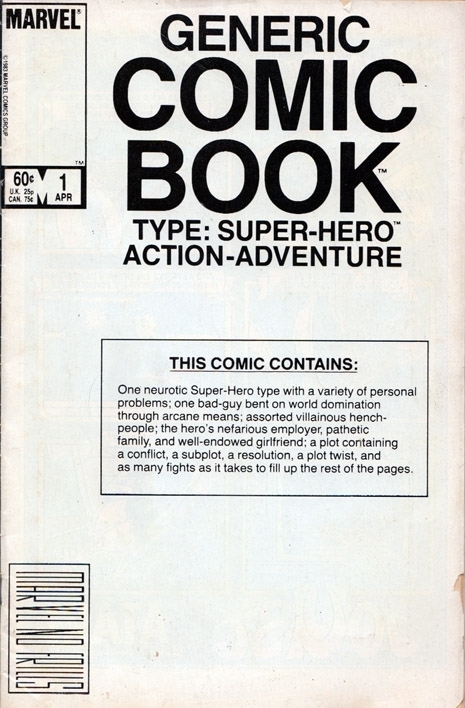 |
||
| Post 13 • IP flag post | ||
 Moderator Moderator
|
Jesse_O private msg quote post Address this user | |
From Captain Britain and MI-13 #12, Dr, Dooms armor contains pieces from the "true cross" to protect him against Dracula.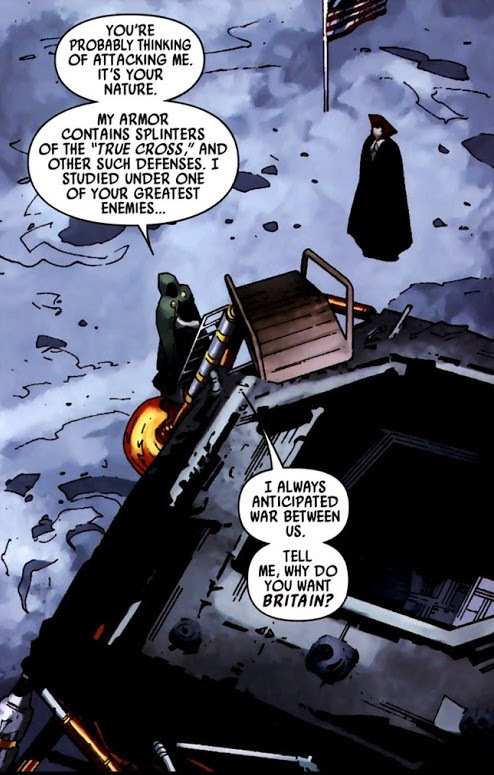 |
||
| Post 14 • IP flag post | ||
 Collector Collector
|
X51 private msg quote post Address this user | |
Quote:Originally Posted by Jesse_O When I quit collecting in the 80's, the last batches of books I bought were unbagged and unboarded in my collection. They were stuff in the end of a box and put away in storage. When I got back into collecting in the 90's, this was one of those last comics I had bought. |
||
| Post 15 • IP flag post | ||
 Moderator Moderator
|
Jesse_O private msg quote post Address this user | |
| Venom was originally going to be female. Quote: Originally Posted by Spiderman Reviews article |
||
| Post 16 • IP flag post | ||
 Leftover Sundae Gnus Leftover Sundae Gnus
|
CatmanAmerica private msg quote post Address this user | |
| This is a reply just posted to another forum, but as it so aptly fits these discussions, I’d be remiss not adapting it for this thread. _____________________________________________________________ This is a slightly expanded response to a statement appropriately praising Joe Simon's contributions while asserting he didn’t receive enough credit: True, in respect to his creative talent, but during his lifetime Joe Simon was fully able to hold onto the credit he wanted while never demonstrating an inclination to overhype his role (which is a rare virtue indeed). Joe Simon was the brains behind the S&K “shop” ...for want of a better term, the collaborating team responsible for so much GA output with top comic publishers... which had a solid business model through much of the 40’s into the mid-50’s. With Jack Kirby, Simon created the most influential patriotic character of all time, Captain America. Then, moving over to DC, built on the concept of the kid hero genre they’d started at Timely. After leaving DC, Joe edited and published lines of books under the Prize Comics Group with Jack doing much of the art. Together they created the romance comics genre that addressed an unserved market. In later years, Joe wrote/co-wrote (with his son) two exceptional reference books about the comics industry providing evidence and historical anecdotes that help put his role and that of other creators in perspective. I'm convinced Joe Simon was a very smart guy who achieved most everything he wanted without taking more credit than he deserved, and then made a good effort at setting the record straight with fascinating behind the scenes look at the business. It's a journey that has the ring of truth. As a cover artist, Joe was above average, but arguably not great. What he did extremely well was mimicry. If he was working for a publisher who had an artist of exemplary talent whose style was both easily recognizable and popular, he’d emulate that style closely enough that it would keep fans guessing. For instance, Lou Fine’s popular covers for Victor Fox ended when the artist moved to the more lucrative and secure work from “Busy” Arnold at Quality. Joe, while still turning in assignments for Fox Features, created a number of covers in a similar style to Lou’s. By the same token, when Jack Kirby was rushed, Joe could turn out covers in a style reminiscent of Jack’s that complimented his style of art. Joe Simon epitomizes my idea of “Jack of all trades...,” except in Joe’s case he was truly an able master of them all. Recommended reading: My Life In Comics by Joe Simon 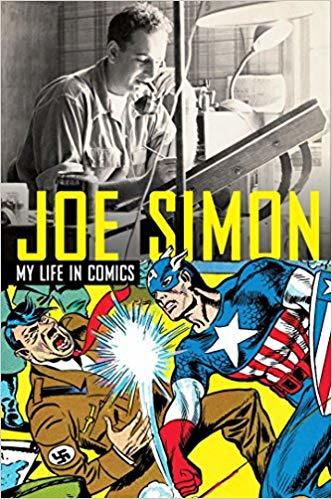 The Comic Book Makers by Joe Simon & Jim Simon  |
||
| Post 17 • IP flag post | ||
 Moderator Moderator
|
Jesse_O private msg quote post Address this user | |
The World's largest comic convention was held this weekend in Tokyo, Japan. Held twice a year, Comic Market (or Comiket) draws over 500,000 people each time. It is held for four days Friday through Monday. People start lining up days in advance and it typically is a three hour wait to get in the doors. It is mostly manga, anime and games. It started in 1975 with about 700 attendees.  |
||
| Post 18 • IP flag post | ||
 Moderator Moderator
|
Jesse_O private msg quote post Address this user | |
| G.I. Joe #21 is known as the "Silent Issue". It is the first appearance of Storm Shadow. It was written by Larry Hamas and drawn by Steve Leialoha. It is also, the first comic book printed without any dialogue. There are a few words (on a screen and on a grenade for instance) but no word balloons. It is a landmark issue and many comic book writers cite it as an inspiration. But what inspired Larry Hamas to do this?? Nothing less than another ground breaking comic drawn by the incredible Jim Steranko. In Nick Fury: Agent of S.H.I.E.L.D. #1 Steranko did not use any words for the first three pages as the reader watched Nick Fury infiltrate a fortress. It was the first time that anyone had left the first three pages completely void of words. Steranko says he was inspired by a movie that he saw when he was 15 called Rififi which is entirely silent for the middle third of the movie while a robber is pulling off a heist. It makes me wonder, which writers were influenced by Hamas and what did they do in tribute to G.I. Joe #21??? |
||
| Post 19 • IP flag post | ||
 Collector Collector
|
X51 private msg quote post Address this user | |
Charles Schultz's first comic book art. He drew backgrounds.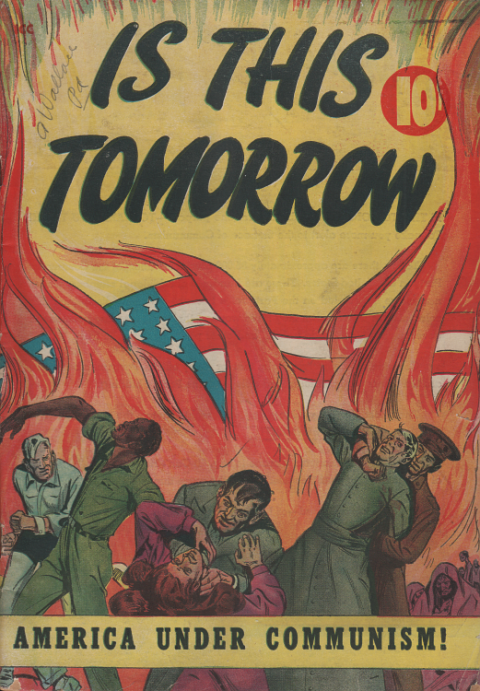 |
||
| Post 20 • IP flag post | ||
 Collector Collector
|
X51 private msg quote post Address this user | |
| Here are some trade magazines for the printing industry in 1942 & 1943. These are scans of my copies. Print Magazine (Vol. 3) #2 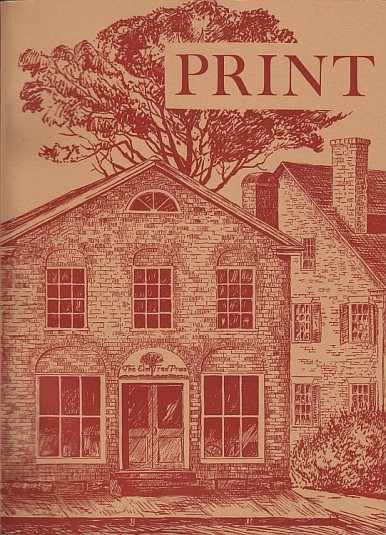 Because I'm lazy, I'll repost what the worthpoint.com site says: Print was one of the most expensive and exclusive publications of its day, sold by subscription only to a select audience interested in fine press books, book binding and printing technology. In Gaines's contribution to this Spring, 1942 issue he links the comic books of the 20th Century to a tradition extending back to prehistoric cave paintings, and as far back in printed books as the 15th Century. There are numerous black and white illustrations in the article, including reproductions of the early works just mentioned as well as samples from Winsor MacKay, F.B. Opper, Max und Moritz, Terry and the Pirates, and the cover for the then unpublished Wonder Woman Number 1, which Gaines co-created with William Marston under the pseudonym "Charles Moulton". The article is also illustrated with two comic inserts in full color - The Minuteman Answers The Call , originally intended to promote the sales of War Bonds, and Picture Stories From the Bible . Picture Stories had originally appeared as a series of ten in the Sunday Herald and different extracts appeared with this article ------------------------- An eBay ad selling it said this: 1942 PRINT Magazine With TWO E.C. COMIC BOOK inserts! M.C. GAINES article on HISTORY OF COMIC BOOKS with TWO ACTUAL FULL COLOR RARE EC COMIC BOOKS! SCARCE - ONLY DISTRIBUTED TO PRINT PROFESSIONALS Print Magazine Two actual full color EC comic books are bound into the journal... Minute Man Picture Stories This is a copy of PRINT MAGAZINE , Volume 3 #2. This was published in the SUMMER of 1942. This is subtitled "A Quarterly Journal Of The Graphic Arts." This is a squarebound, high quality magazine that was published by WILLIAM EDWIN RUDGE of WOODSTOCK, VERMONT. This magazine was only sold to printing and graphic arts professionals. The magazine really made a deluxe presentation. There is an article about braille printing for the blind, with a page actually printed in braille inserted. There is an article, one is a series of "One Hundred Masterpieces of Printmaking" with a tipped in plate. The highlight of this issue is an article by M.C. GAINES, an important figure in the development of the American comic book art form and industry. From Wikipedia: Maxwell Charles Gaines (born Maxwell Ginsburg or Maxwell Ginzberg c. 1894; died August 20, 1947), known as Max Gaines, also known as M.C. Gaines or Charlie Gaines, was a pioneering figure in the creation of the modern comic book. In 1933 Gaines devised the first four-color, saddle-stitched newsprint pamphlet, a precursor to the color-comics format that became the standard for the American comic book industry. He was co-publisher of All-American Publications, a seminal comic-book company that introduced such enduring fictional characters as Green Lantern, Wonder Woman, and Hawkman. He went on to found Educational Comics, producing the series Picture Stories from the Bible. He authored one of the earliest essays on comic books, a 1942 pamphlet titled Narrative Illustration, The Story of the Comics. After Max Gaines' death, Educational Comics was taken over by his son Bill Gaines, who transformed the company (now known as E.C. Comics) into a pioneer of horror, science fiction and satirical comics. The article is titled "NARRATIVE ILLUSTRATION - THE STORY OF THE COMICS." It shows an amazing grasp of the power of the art form of using words and pictures to tell stories. Gaines cites early historical sequential narratives. Examples are shown, including cave paintings, Egyptian hieroglyphics, the Bamberg illustrated Bible, and more. He describes the birth of comics, even giving credit to Rodolphe Toepffer, author of Obadiah Oldbuck. He mentions and shows examples of comics by Wilhelm Busch, Winsor McCay, F.B. Opper, Milton Caniff, Otto Soglow, and more. ALSO INCLUDED WITH HIS ARTICLE ARE TWO COMPLETE FULL COLOR E.C. COMIC BOOKS, BOUND RIGHT INTO THE MAGAZINE! Gaines included the actual comic books to show their power of graphic communication. Each promotional comic book shows a different approach to a different topic. One comic book is THE MINUTEMAN ANSWERS THE CALL - an inspirational story of how the spirit of the original American minutemen lives on wherever people fight for freedom. A great patriotic promotional comic book. This is full color, printed on high quality white paper. The other comic book is a complete chapter of PICTURE STORIES FROM THE BIBLE, the story of "JONAH AND THE WHALE." This is printed on actual newsprint paper, in full color. Back cover and spine... Print BC Print Spine Pages from M.C. Gaines article... This historic publication contains one of the earliest overviews of the history of comic books and their roots in history, written by one of the men who helped make them what they are today! It also contains two complete actual E.C. giveaway comic books, in great shape, just as they were originally inserted and bound into the magazine. ------------------------- Print Magazine (Vol. 2) #3  An auction said this about #3: Gaines's second contribution to Print came in the next issue, which did not appear until Autumn 1943, more than a year after the preceding issue. By now the strains of WWII were being felt in the magazine industry as well as everywhere else in the economy - in a letter from publisher William Edwin Rudge laid into the front of this issue he apologizes both for its being late and in a "simpler format", but pledges to "continue publication in the face of every present difficulty" (although this was not to be - the next issue of Print did not actually appear until two years later, after the war had ended). Although a color comics insert is not included with Gaines's article Good Triumphs Over Evil : More on the Comics, it is illustrated with a color plate on the title theme, taken from an oil painting done by an apprentice in Gaines's shop. While the first article covered the history of the comics, this one details the full process involved in producing a comic book in 1943 - illustrated with small black and white reproductions of a page of original script, the pencilled draft for the page and the final inked-in version, all taken from Wonder Woman Number 7. There are also three photos showing the engraving, printing and binding shops Gaines's company used for production. Again, this copy is in very good condition, clean inside and little used, with minor creasing and wear to the rear cover. Each magazine measures 7 1/4 x 10". It is difficult to find either of these articles in their first printings, before the reprints in pamphlet form noted in the Overstreet Comics guide, which are in themselves considered exceedingly rare. Print magazine had a very limited circulation to begin with, and with wartime re-use of materials including paper it seems few copies have survived. Here's an unusual opportunity to get both at once. ------------------------- I actually own the slipcase with issue#'s 1 through 4.  |
||
| Post 21 • IP flag post | ||
 Collector Collector
|
X51 private msg quote post Address this user | |
| A cool web page that is only available in the Internet Archive. The Evolution of Speechballoons https://web.archive.org/web/20070405145657/bugpowder.com/andy/e.speechballoons.evolution.html |
||
| Post 22 • IP flag post | ||
 Masculinity takes a holiday. Masculinity takes a holiday.
|
EbayMafia private msg quote post Address this user | |
| Exactly 30 years ago in 1989...Batman (the movie) changed the world for comic enthusiasts. It may not seem like a big deal today, but at the time having a huge budget super-hero movie with A-list actors (Kim Bassinger, Michael Keaton, Jack Nicholson) was everything an 18 year old fanboy had imagined for many years. Finally the general population got to see comic characters delivering the entertainment that I had experienced for years as a reader. I remember leaving the theater so fulfilled and gratified that my hobby had finally recieved it's due on the big screen and the world would finally understand why I read comic books. Finally I could be a comic collector and still be socially acceptable. It was all I could think about for a week after. I left the theater knowing that the comic book industry had been changed forever and now there was a good chance that the other 95% of the world would one day know who the X-men were. I had no idea how big it would get, but I knew then that comic books were going to be accepted at a different level than ever before. I'm not sure the Batman Movie gets fully recognized as the ground-breaking industry changer that it was. Without Batman the Movie, I really doubt there would have been Avengers Endgame. |
||
| Post 23 • IP flag post | ||
 Collector Collector
|
Jabberwookie private msg quote post Address this user | |
Quote:Originally Posted by Jesse_O I can't recall if it was in honor of or what, but Marvel in the early aughts did a Nuff Said on each of their books where there was no dialogue. And this might not be news, but Steranko was an escape artist for a time. I met him and got his autograph on an old Shield comic. He is a great guy, but much shorter than I expected. |
||
| Post 24 • IP flag post | ||
 I'm a #2. I'm a #2.
|
BigRedOne1944 private msg quote post Address this user | |
Quote:Originally Posted by EbaySeller I very much agree with your assessment of that first Batman movie. It most definitely raised the bar and set the standard for comic book movies. The merchandising for the film was also huge! The high expectations of its release with all of the big name hollywood names made it almost "Beatlistic" and boy did it deliver the goods! IMHO it is still the best comic book movie ever made and it still holds its own, even after 30 years! Indeed it set the new standard. Another very much overlooked aspect was that Detective Comics was commemorating Batman's 50th Anniversary with the three issue "Blind Justice" story line, that just so happen to be wrtten by the same writer of the Batman Movie ,Sam Hamm. I think the three issue "Blind Justice" is very overlooked. 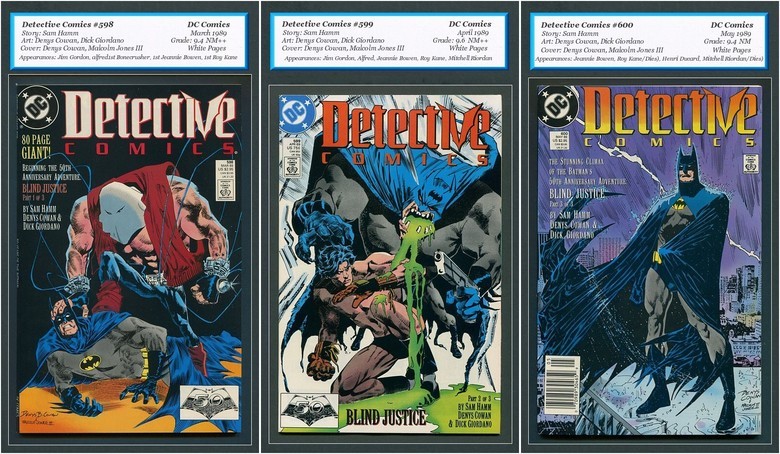 The real gem that got over looked for many years was the Beautiful prestige format Movie Adaptation.  I think collector are starting to realize what a key book this is. I had 10 one owner copy's and have been selling them for a progressively higher price each time. I believe the last one I sold was for $40 (Raws) There is also a Newsstand Version  |
||
| Post 25 • IP flag post | ||
 COLLECTOR COLLECTOR
|
dielinfinite private msg quote post Address this user | |
@BigRedOne1944 There’s at least two versions of both the standard and prestige formats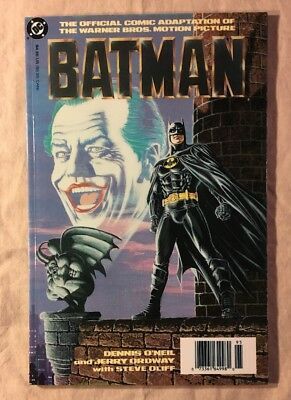  |
||
| Post 26 • IP flag post | ||
 Masculinity takes a holiday. Masculinity takes a holiday.
|
EbayMafia private msg quote post Address this user | |
| Sorry for reviving this thread every couple of weeks, but I think it's worthy. Here is some interesting data I pulled out of GoCollect sales data base: Hulk 181 in 8.0 was selling for $1,800 in 2014 and 5 years later is selling for $3,700, pretty much an exact double in price over the five years. Hulk 180 in 8.0 was selling for $400 in 2014 and 5 years later is selling for $800. Seems that #180 pricing walks in lock-step with #181. I was expecting to find #180 growing at a faster rate. Looking at Modern comics (since 1985) in 9.2 grade: For books printed between 1985-1999, the list of 200 most commonly purchased back issues contains 22 books selling for $100 or more in CGC slabbed grade 9.2 For books printed from 2000 to today, the list of 200 most commonly purchased back issues contains 27 books selling for $100 or more in CGC slabbed grade 9.2 That's almost a 25% increase in books that command over $100. I believe books from the Walking Dead run may account for the entire difference. |
||
| Post 27 • IP flag post | ||
 Moderator Moderator
|
Jesse_O private msg quote post Address this user | |
Ever wonder about the power of direct sunlight? I have a cheap printer/scanner from Walmart. I have it sitting by a window and the midday sun shines directly unto the printer. This is a scan of a comic with the scanner cover closed and the sun shining directly unto it.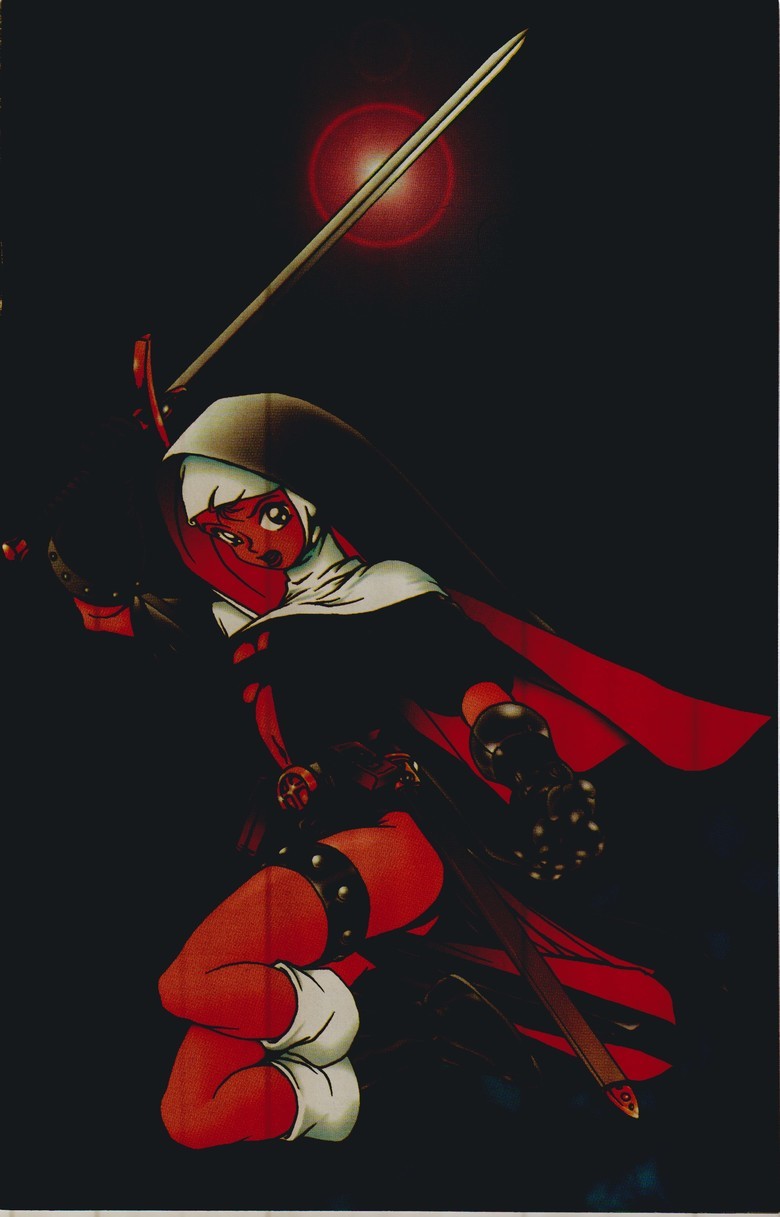 That is cropped. In the preview window, there were streaks of color so it looked like the comic was melting from the bottom. It was kind of a cool effect, now that I know what makes it. But at the time, I thought my scanner had gone to hell. But I thought about it for a second. The printer didn't feel warm to the touch. The window air conditioner is in the same window. So, without doing anything else, I closed the shade on the window and this was the result. 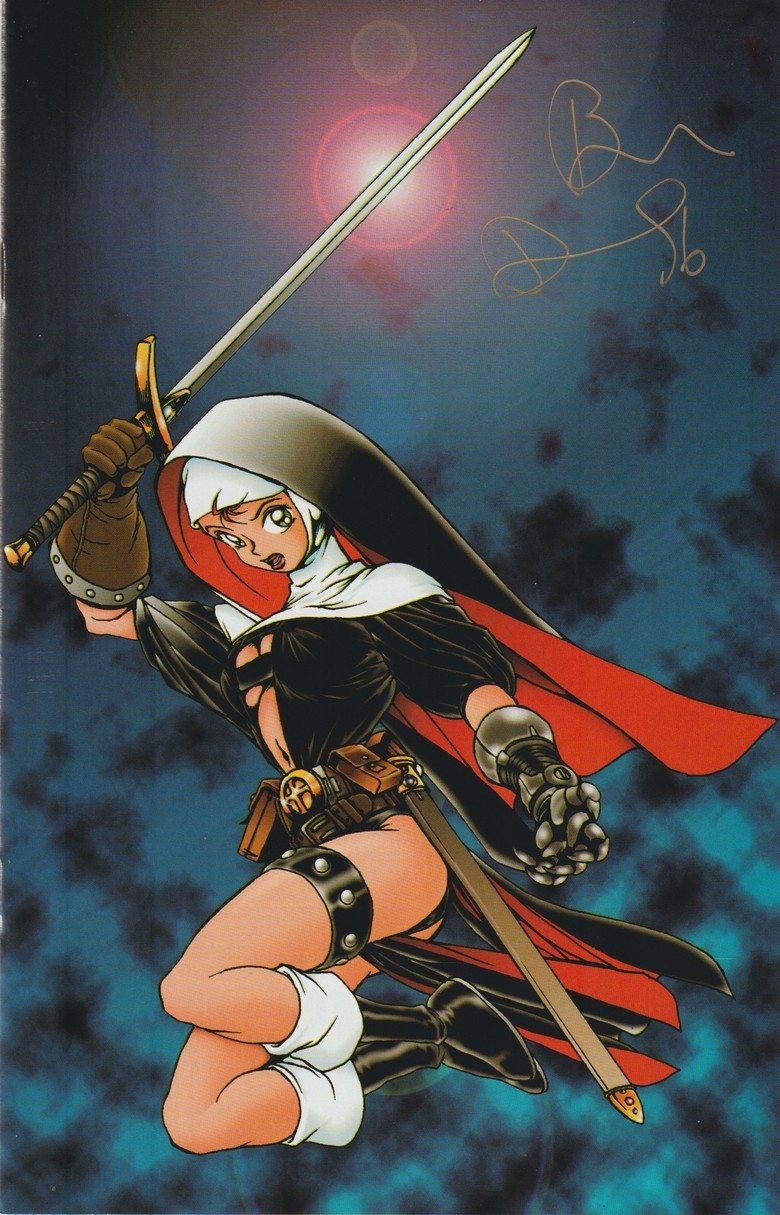 I hadn't touched the comic at all. I didn't lift the scanner cover at all. All I did was pull the shade down. These scans are about 1-2 minutes apart. If I remember, I'll get a full scan of this same book with the sun hitting the cover so you can see the "melting" effect that I mentioned. Hopefully it will be sunny tomorrow. |
||
| Post 28 • IP flag post | ||
 Moderator Moderator
|
Jesse_O private msg quote post Address this user | |
Yesterday was cloudy, so I didn't scan the comic. Today it's nice and bright out. I think I might be a bit earlier scanning today. The amount of "bleeding" doesn't seem as bad as the other day. However, here is what it looks like. Again, the scanner cover is closed and the sun is hitting the cover. It is actually hitting a little more than half the cover.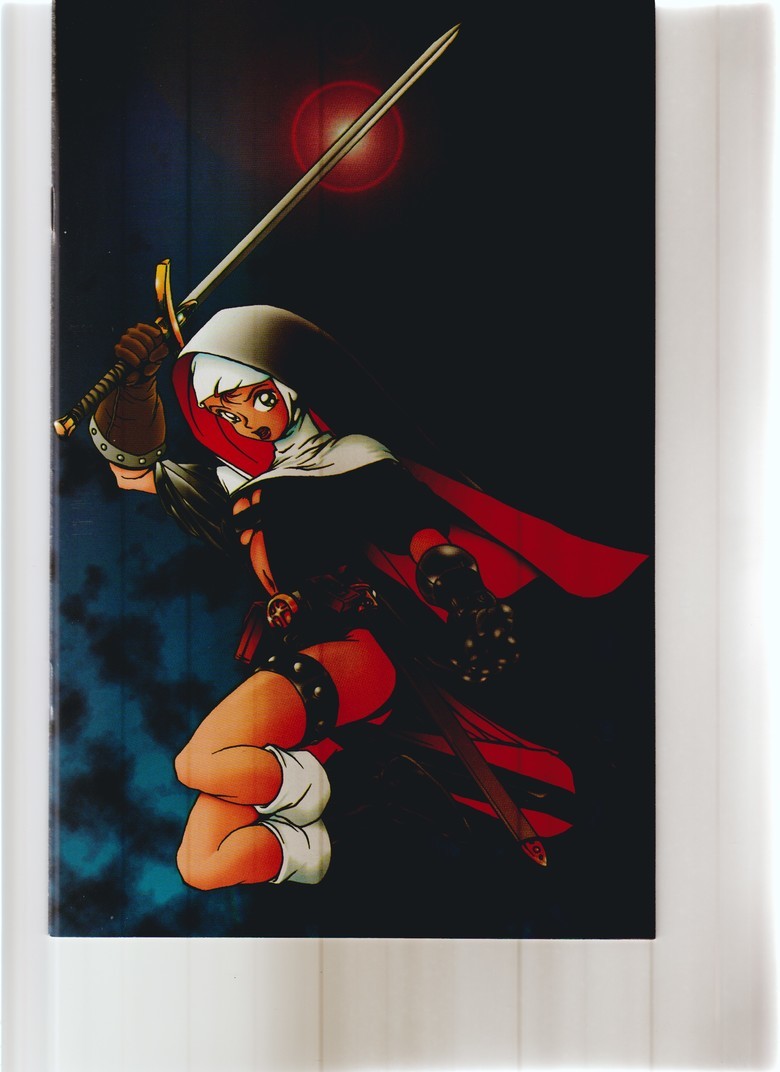 |
||
| Post 29 • IP flag post | ||
 Moderator Moderator
|
Jesse_O private msg quote post Address this user | |
In my opinion, one of the most interesting, and basically underrated, comic book artist of all times is Russ Heath. Born in 1926, Mr. Heath worked on comics from high school through most of his life. He passed away in 2018, but his last published piece was a one page pin-up for Glamourpuss #19 (May, 2011)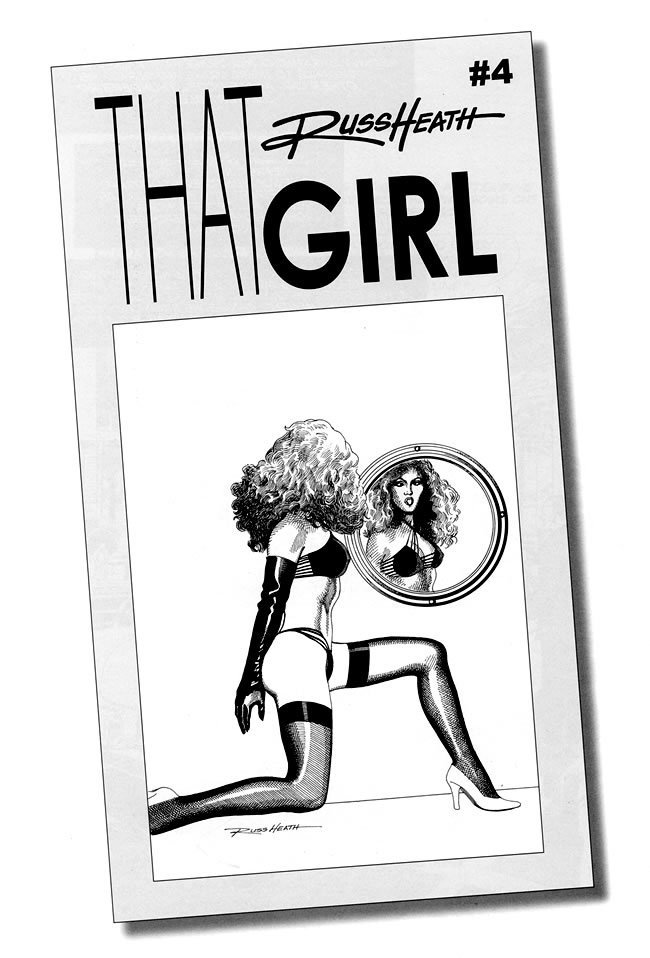 Heath is remembered mostly for his Western and War comic art. But he did pieces for Playboy, Mad, Crazy and National Lampoon. Roy Lichtenstein ripped off two pieces of Heath's art. But what I remember him most for is the Roman Soldier and Revolutionary War Solder toy ads. I sent away for the Roman Soldier set and was severely disappointed that they looked NOTHING like the art!!!! Heath did such an amazing job on those two ads that I am still floored when I look at them. Heath stated that he did not see any of the toy soldiers until after he had done the ads. He got paid a total of $50 for those two ads that were used for years!!!! Somewhere, I have a comic where he signed the ad page. I got it from a friend a number of years ago and I plan on having it verified one of these days.  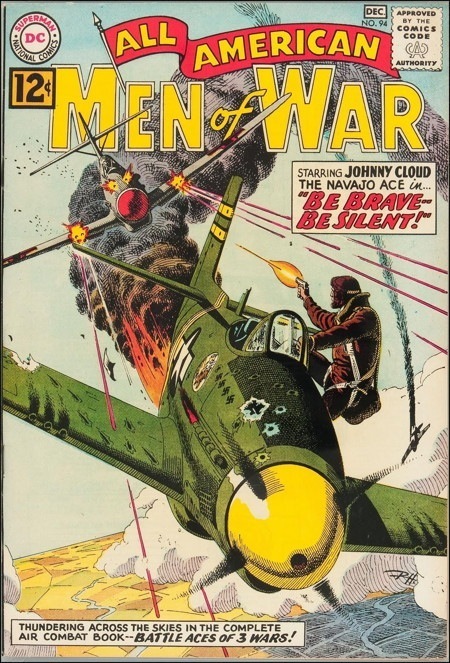   |
||
| Post 30 • IP flag post | ||
This topic is archived. Start new topic?
